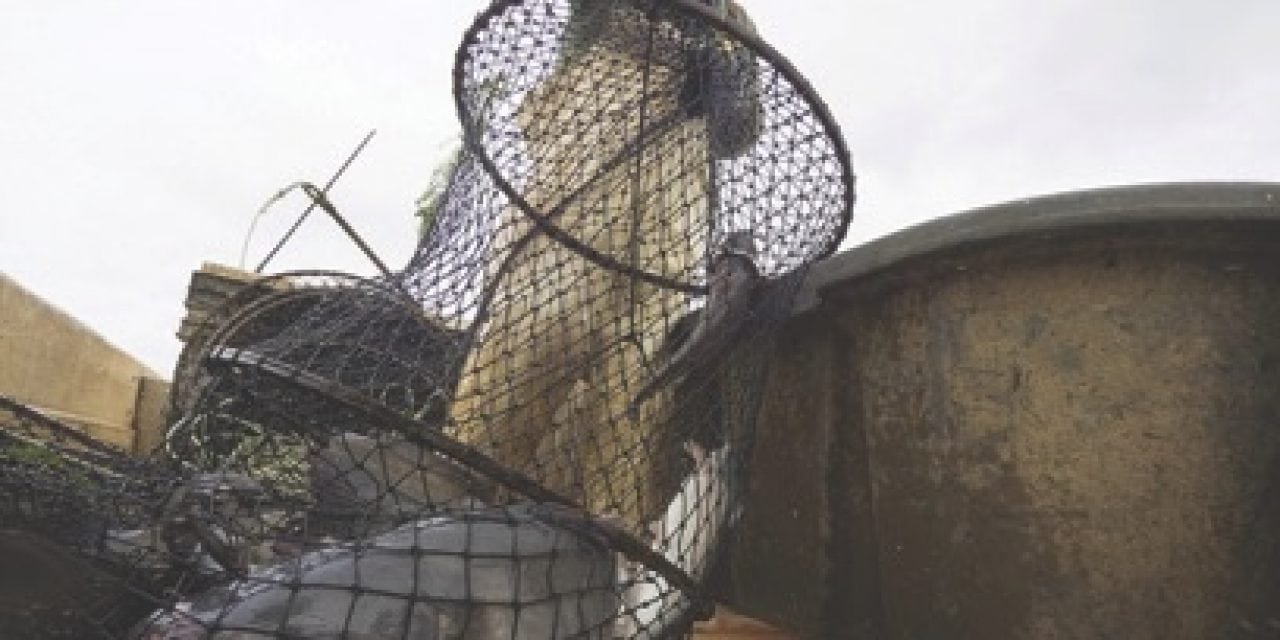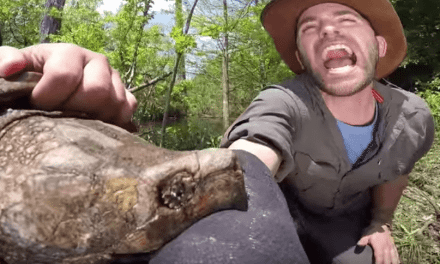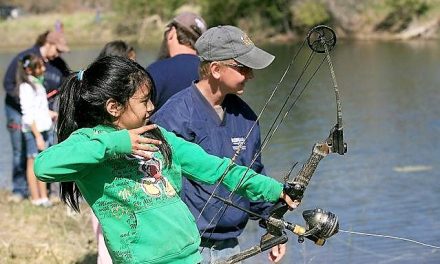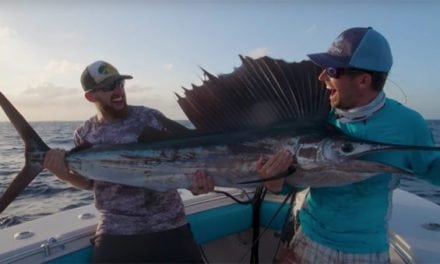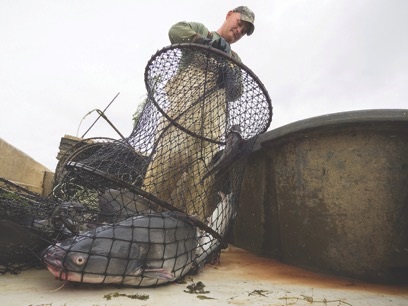 The scientific name of American shad, Alosa sapidissima, may mean savory fish, but it appears that the region’s hungry horde of blue catfish don’t necessarily share that view.
The scientific name of American shad, Alosa sapidissima, may mean savory fish, but it appears that the region’s hungry horde of blue catfish don’t necessarily share that view.
Some fishery managers in recent years have worried that rapidly growing numbers of the nonnative catfish in the region’s tidal rivers might hamper efforts to rebuild populations of shad and river herring, whose coastwide populations are at near-record lows.
But a recent analysis of the stomach contents of blue catfish caught in the James River from 2012 through 2015 found little evidence that they were zeroing in on shad and herring as they migrated upstream to spawn.
Fisheries biologists from Virginia Tech found that shad and the two river herring species — alewife and blueback herring — each accounted for less than 1 percent of the stomach contents of blue catfish caught during spawning season. Hickory shad, a related herring species which is more abundant, were found in 1.17 percent of the blue catfish stomachs examined.
But the story might be different for flathead catfish, another nonnative predator whose numbers have also been increasing. The biologists found American shad, hickory shad or river herring in nearly 17 percent of flathead catfish stomachs examined.
“We have to start talking about these catfish species as different animals, because they are,” said Don Orth, a Virginia Tech fisheries biologist overseeing the study. “Flathead catfish are clearly living at a higher trophic level.”
The shad and herring analysis is part of a broader study in which the research team has examined the stomachs of nearly 17,000 catfish from the James, York and Pamunkey rivers. Gut contents are identified either visually or, when that is impossible (as is often the case), through DNA analysis.
Results from the broader study are not expected until later this year. But because of concerns raised by management agencies about the nonnative fish, the study team recently completed an analyses of the 2,495 catfish caught during shad and herring spawning runs. That included 2,164 blue catfish and 331 flathead catfish.
Fish were collected in several areas of the tidal James, but the biologists found that catfish in the freshwater between the fall line and Boshers Dam outside Richmond were more likely to have shad and herring in their stomachs.
In that area, more than 10 percent of blue catfish, and more than 30 percent of flathead catfish, had eaten American shad, hickory shad or river herring.
Scientists suggested that the dam was likely restricting upriver migrations, causing shad and herring to congregate below the barrier. In addition, the rapids along the Fall Line, as well as the boulders and remnants of old bridges and dams in that area of the river, provide opportunities for catfish to ambush their prey.
“The whole Fall Line is thick with flathead catfish in the James River.” said Bob Greenlee, a fisheries biologist with the Virginia Department of Game and Inland Fisheries, which is funding the study. Shad and river herring “are having to swim through what I would classify as a gantlet of flathead catfish.”
Still, while the Virginia Tech analyses show that the percentage of shad and herring found in blue and flathead catfish was relatively low, the catfish populations are large. Biologists won’t be able to estimate the actual number of shad and herring eaten until they can estimate the size of the catfish populations — something that won’t be completed until next year.
Blue and flathead catfish were introduced into Virginia rivers for sport anglers starting in the 1970s, but their numbers — especially of blue catfish — have mushroomed in the last two decades. Blue catfish are abundant in the river and can grow large — the Virginia record is more than 100 pounds — sparking concerns that they may be devouring great numbers of fish of conservation concern.
In recent years, state fishery managers have aggressively promoted a commercial fishery targeting blue catfish, with the hope of thinning their numbers.
But by itself, Orth cautioned, that fishery may have limited benefit for shad and river herring. If predation does prove to be of concern, Orth and Greenlee both said the study results suggest changes in management efforts in the James River that would target areas below Boshers Dam outside Richmond, and emphasize flathead rather than blue catfish.
“The results are pretty clear in terms of what we ought to do next,” Orth said. “We’ve got to treat the species differently, and we’ve got to treat space differently.”
Indeed, the results show that while flathead catfish almost exclusively eat other fish, blue catfish primarily eat vegetation, invertebrates, crustaceans and mollusks until they reach about 20 inches, when their diet switches mostly to fish.
“These things are eating every day, and they are eating whatever is abundant,” Orth said.
The post Shad and herring on the dinner plate for flatheads appeared first on .

